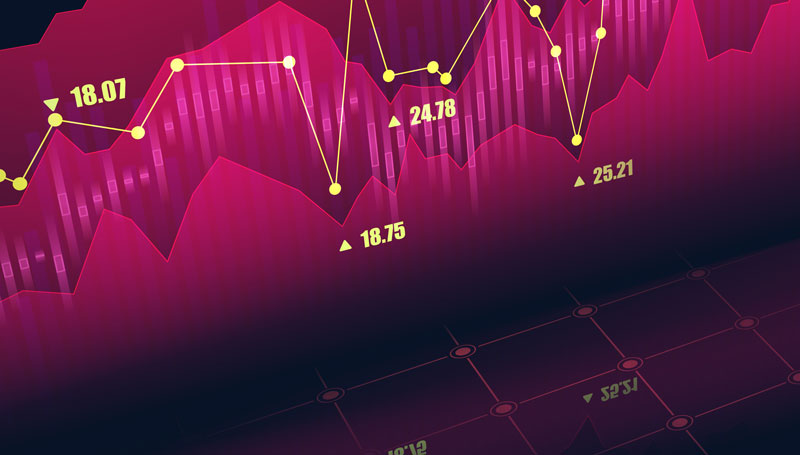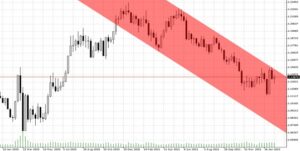

18.02.2022 – There has rarely been so much nervousness: Above all, the Ukraine crisis is tugging at investors’ nerves. But also the erratic statements from the Federal Reserve. Any piece of news can throw the market into turmoil.
Flight into the dollar possible
Both events could support the greenback. If the recent rate hike fantasies from the Fed become monetary policy and if the Ukraine crisis escalates, a flight to the dollar is quite possible. Since America will probably raise interest rates faster and more strongly than Europe, and since our continent is particularly dependent on Russian energy, the euro in particular should weaken against the dollar.

Source: Bernstein Bank GmbH
Hope for diplomacy
After the firefight between separatists and the Ukrainian army in the Donbass with mutual recriminations, Wall Street reset for the time being. After all, the White House has been warning of an imminent invasion for weeks. But then the U.S. State Department pulled the futures up again: According to it, Antony Blinken wants to meet with Russian Foreign Minister Sergei Lavrov next week.
The Stalinist Legacy
De facto, we see little possibility of a peaceful solution in Ukraine. This is because Russian President Vladimir Putin – largely unnoticed by the world press – has laid his cards openly on the table. During the visit of German Chancellor Olaf Scholz (SPD), Putin spoke of an imminent genocide against the Russian minority in Ukraine. He can hardly back down behind this line. The protection of Russians abroad is a reason of state, which makes an evil legacy of Stalin’s dictatorship dangerous.
Stalin had systematically settled Russians in occupied territories and made a large part of the domestic elite disappear in the Gulag. And this happened BEFORE the invasion of the Soviet Union by the Wehrmacht. This guilt is not discussed in Russia – and if there are organizations like Memorial, which do it, they are banned. Putin, too, sees the USSR only as a great savior of mankind from the Nazis; his own atrocities and the fears of small neighboring countries do not interest him.
The ethno-factor
Thus, today many Russians live in the Donbass, but also in Estonia, Latvia and Lithuania. These Russians often do not have passports from the host countries. They are de facto stateless and could persuade Moscow – as perhaps now in Ukraine – to invade. Especially since the Russian Duma has just demanded recognition of the People’s Republics.
For Putin, anything less than a separation of the Lugansk and Donetsk regions, where war has been raging for years anyway, would be a bitter loss of face. Then he would also have a new buffer against NATO. Who knows: Maybe the West will sacrifice Ukraine and force the country to “voluntarily” cede the ethnic Russian territories. Then Putin would have protected his countrymen, avoided an expensive war. Russia can point out that the West has always supported the independence of the small, non-Russian Soviet states. The stock market would celebrate.
Loose Cannon
That leaves us with a look at the Fed. Jim Bullard is causing panic like a cannon that has broken loose from its ropes and is rolling around uncontrollably. The St. Louis Fed chief just warned at a Columbia University event that inflation could spiral out of control – and advised a full percentage point rate hike in July. Ergo, Higthech stocks in particular dove.
Bullard stressed the core PCE – that is, the core rate of personal consumption expenditures that the Fed pays particular attention to – “does not have the reputation of coming down naturally.” He said the Fed needs to sell long-dated U.S. bonds to bring rates up at the long end. Jim Bullard warned earlier that the Fed risks its credibility if it doesn’t take decisive action against inflation.
Who knows what the weekend will bring. Bernstein Bank advises caution in the current situation – anything is possible and the opposite of everything.
Important Notes on This Publication:
The content of this publication is for general information purposes only. In this context, it is neither an individual investment recommendation or advice nor an offer to purchase or sell securities or other financial products. The content in question and all the information contained therein do not in any way replace individual investor- or investment-oriented advice. No reliable forecast or indication for the future is possible with respect to any presentation or information on the present or past performance of the relevant underlying assets. All information and data presented in this publication are based on reliable sources. However, Bernstein Bank does not guarantee that the information and data contained in this publication is up-to-date, correct and complete. Securities traded on the financial markets are subject to price fluctuations. A contract for difference (CFD) is also a financial instrument with leverage effect. Against this backdrop, CFD trading involves a high risk up to the point of total loss and may not be suitable for all investors. Therefore, make sure that you have fully understood all the correlating risks. If necessary, ask for independent advice. CFDs are complex instruments and are associated with the high risk of losing money quickly because of the leverage effect. 68% of retail investor accounts lose money trading CFD with this provider. You should consider whether you understand how CFD work and whether you can afford to take the high risk of losing your money.
